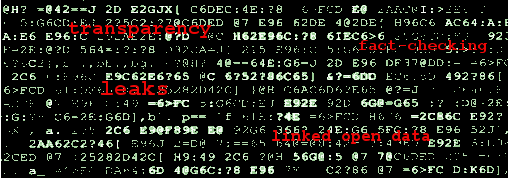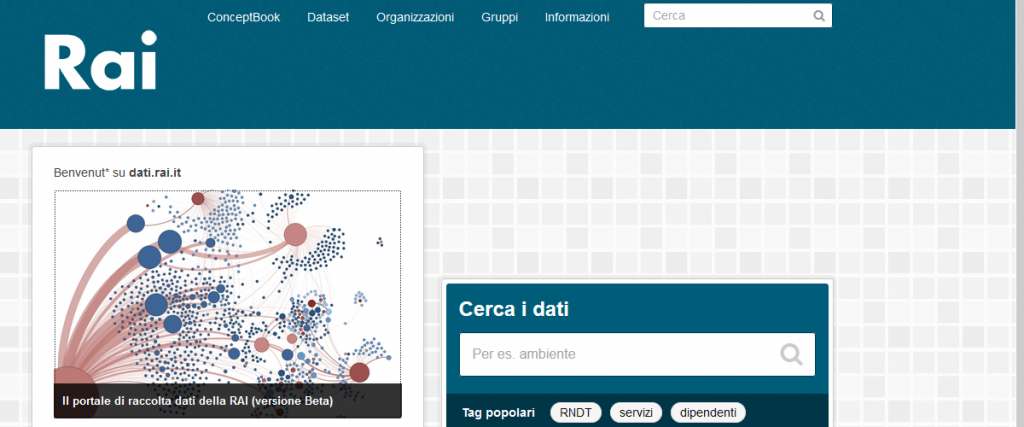Technology for “Data Journalism” activities
The project is aimed at designing and implementing technologies for data-driven journalism activities

In the modern digital age methodologies for professional Big Data analytics represent a strategic necessity to make information resources available to professional journalists and media producers in a more effective and efficient way and enabling new forms of production like data driven journalism. The challenge lies in the ability of collecting, connecting, analysing and presenting heterogeneous content streams accessible through different sources, such as digital TV, the Internet, news agencies, social networks and media archives, and published through different media modalities, such as audio, speech, text and video, in an organic and semantics-driven way.
This project defines and implements components and systems for professional information services that address these challenges with a uniform and holistic approach. At the core of the approach there is a set of artificial intelligence techniques and advanced statistical tools to automate tasks such as information extraction and multimedia content analysis targeted at discovering semantic links between resources, providing users with text, graphics and video news organized according to their individual interests. The system allows to define customized search profiles that are automatically and dynamically updated with the relevant contents found in the monitored information sources, which include Web feeds, television channels and specialized circuits such as the Eurovision News Exchange Network (EVN), or legacy archives.
More recently, starting from 2016, the project (in collaboration with Rai Digital) focused on identifying an end-to-end workflow for data driven journalism. Such a workflow foresees the design, implementation and the integration of fundamental components related to the data refining, to the data analysis (maths-statistics), to the structured and machine-readable creation of the story, open data management and advanced visualisation.

Awards
Premio Confindustria ICMT 2010 – Media Driven Convergence
Premio Giovanni Giovannini Nostalgia di Futuro 2010
References
Sabino Metta, Alberto Messina: An end-to-end approach for delivering data-driven stories.
IBC 14-18 September 2017
Giulia Dezi, Giorgio Dimino, Maurizio Mazzoneschi, Alberto Messina, Sabino Metta, Giuseppe Mondelli, Maurizio Montagnuolo, EBU MDN Workshop, 2016
Sabino Metta, Open Data e Data Journalism, Conferenza TAL & Open Data, 2014
Alberto Messina, Maurizio Montagnuolo, Riccardo Di Massa, Roberto Borgotallo: Hyper Media News: a fully automated platform for large scale analysis, production and distribution of multimodal news content. Multimedia Tools Appl. 63(2): 427-460 (2013)
Maurizio Montagnuolo, Alberto Messina: The RaiNewsbook: browsing worldwide multimodal news stories by facts, entities and dates. WWW (Companion Volume) 2012: 389-392
Alberto Messina, Maurizio Montagnuolo: A generalised cross-modal clustering method applied to multimedia news semantic indexing and retrieval. WWW 2009: 321-330
Alberto Messina, Roberto Borgotallo, Giorgio Dimino, Daniele Airola Gnota, Laurent Boch: ANTS: A Complete System for Automatic News Programme Annotation Based on Multimodal Analysis. WIAMIS 2008: 219-222
Related Projects

Active project
Recommender Systems for Audio and Video Contents
An investigation of the solutions to limit information overload for radio television media
The advent of the Internet and the proliferation of digital services have led to a radical change in the way people enjoy radio and television. The plethora of products, services and content available on the Internet has accustomed its users to interactivity, the ability to search and choose when and what media content to listen, transforming the traditional radio and television listeners into an active consumers, capable of expressing their tastes and preferences. Paradoxically, the vast amount of content available has created an informative overhead and created the problem of finding the most suitable content for each user.
Recommender Systems represent the technological response to the need of relevance. In this context, the broadcaster has the opportunity to evolve its communicative paradigm: in addition to broadcast its content, it can propose the most relevant to its users.

Active project
Deep Networks in Content Management Systems
The recent technological advancement of computing systems allows today to find computers with extremely advanced numerical processing capabilities. In particular, the use of Graphics Processing Units (GPUs) for image and multimedia content processing and classification is experiencing a phase of intense development thanks to the deep-seated scientific research conducted in recent years (Deep Learning). Deep Learning is a branch of Machine Learning that uses complex neural networks for a variety of applications. Among these, the application area of automatic classification of audiovisual content is certainly one of the most interesting from the strategic point of view for RAI.